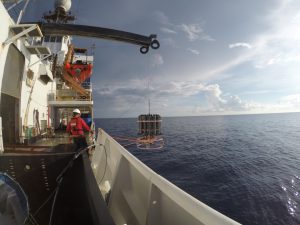
Soliciting 2025 East Coast Ocean Acidification Cruise proposals
FY25 Ocean Acidification Coastal Research: Uniting Investigations and Shipboard Experiments (OA CRUISE) Submit a proposal to complement core observing activities on upcoming East Coast Ocean Acidification Cruise (ECOA-4). The coastal research cruise targets U.S. Coastal Large Marine Ecosystems on the North American East Coast from the Scotian Shelf to the








